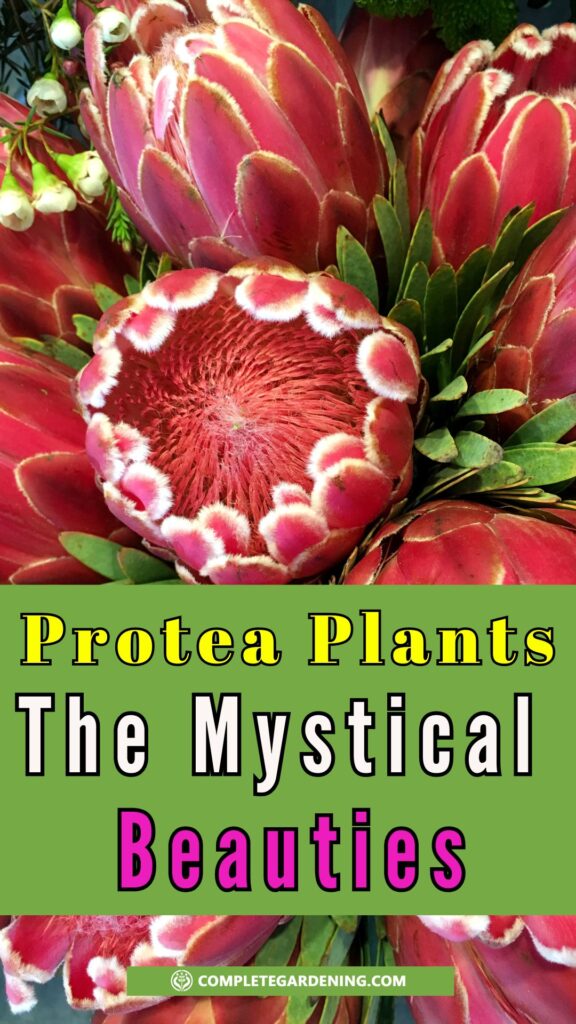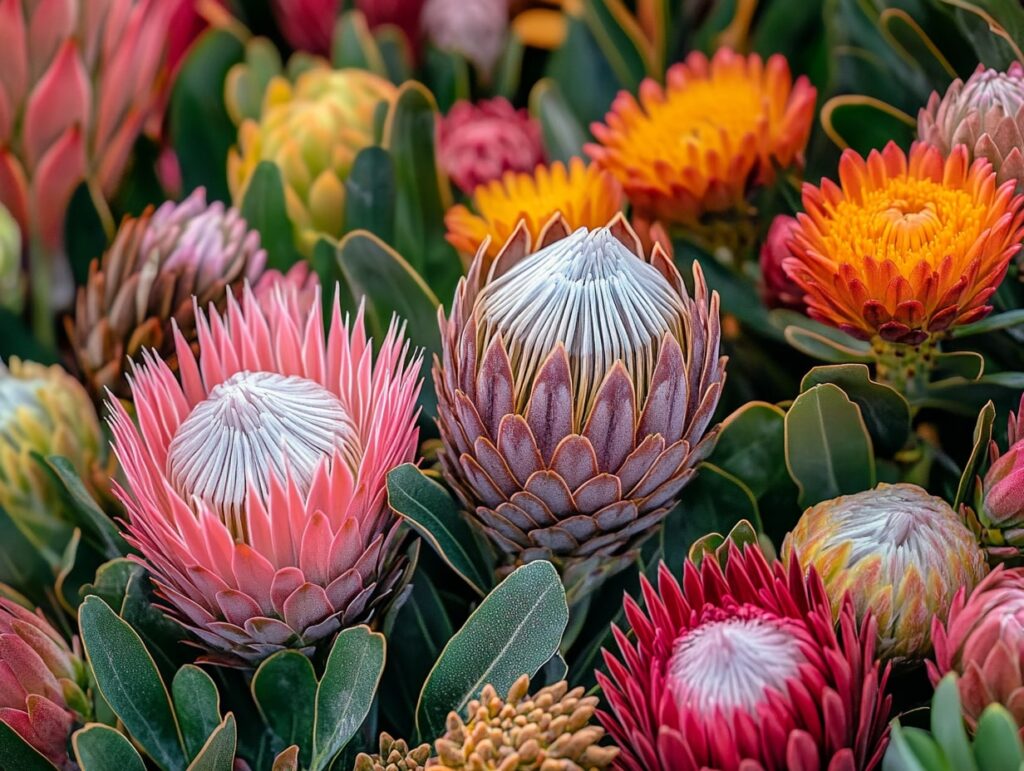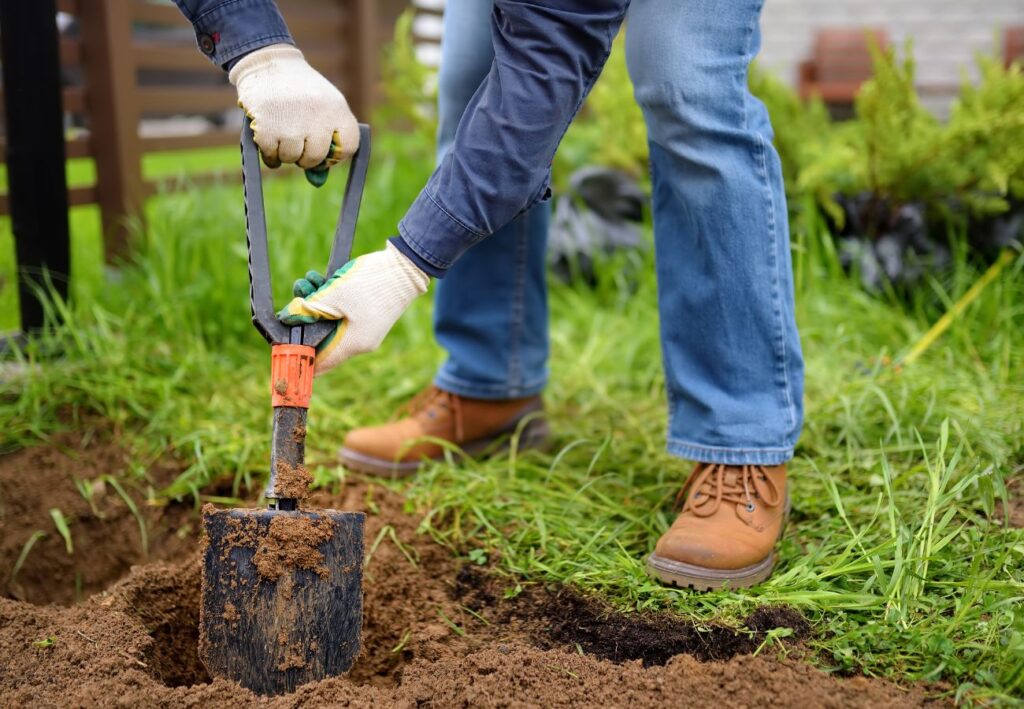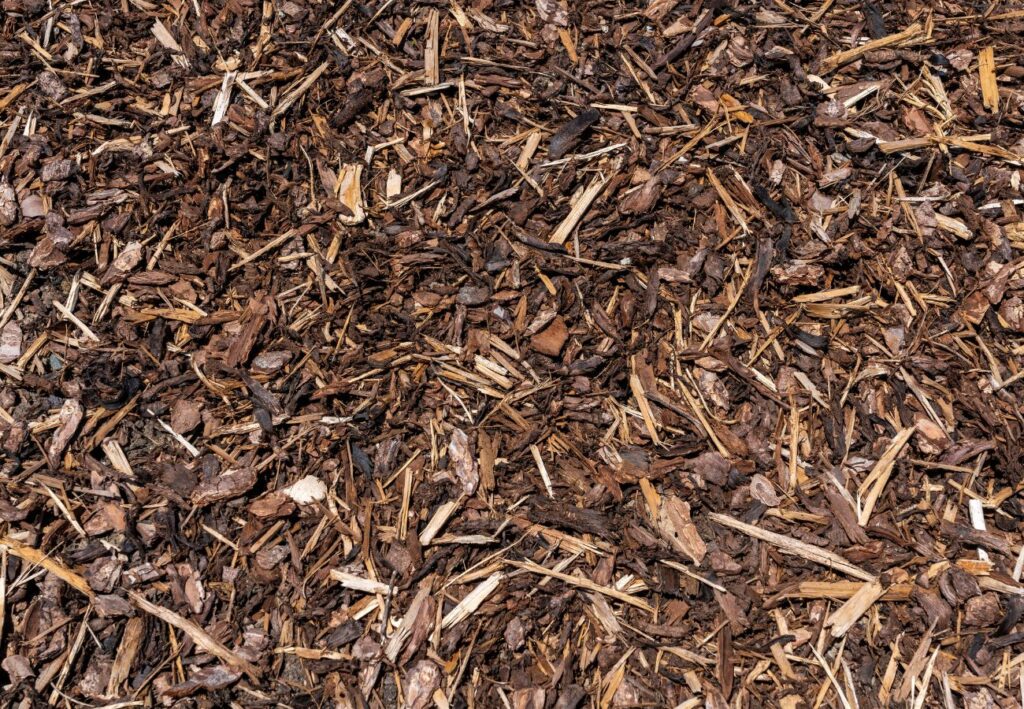Planting, growing, and caring for protea plants can be a rewarding endeavor for any gardening enthusiast. These exotic flowers are known for their unique and striking appearance, often becoming the centerpiece of any garden.
To successfully grow protea plants, you need to ensure they receive plenty of sunlight and are planted in well-draining soil.
Begin by choosing a location that gets at least six hours of direct sunlight each day. Protea plants thrive in warmer climates, so it’s important to pick a spot that mimics their natural environment.
Watering should be done sparingly, as these plants are drought-tolerant and can suffer from overwatering.
Caring for protea plants involves regular pruning to encourage healthy growth and remove any dead or damaged branches. You might also need to protect them from frost during colder months.
With just a little attention to their specific needs, you’ll be rewarded with stunning blooms that add a touch of the exotic to your garden.
Understanding Protea Plants
Proteas belong to the Proteaceae family, which includes over 1,500 species of plants. They are named after Proteus, the Greek god who could change his shape, reflecting the diversity in the species.
Proteas are well-known for their hardiness, drought tolerance, and ability to thrive in poor soils, making them ideal for a wide range of climates and conditions.
Key Characteristics of Protea Plants:
- Foliage: Proteas have leathery, needle-like leaves that are often serrated or spiky. The leaves are typically a deep green or silver-gray, providing a beautiful contrast to the vibrant blooms.
- Flowers: The flowers are large and showy, ranging in color from pink, red, and orange to yellow and white. They can grow up to 12 inches in diameter and have a long blooming period.
- Roots: Proteas have a unique root system called cluster roots, which allows them to absorb nutrients from poor, sandy soils.
Choosing the Right Protea Variety
There are many varieties of protea, each with its own unique characteristics. Some popular varieties include:
- King Protea (Protea cynaroides): Known for its massive, crown-like flowers, the King Protea is the national flower of South Africa. It’s a slow-growing shrub that can reach up to 6 feet in height.
- Pink Ice Protea (Protea nerifolia): This variety is known for its pink and white flowers and is more tolerant of colder climates.
- Sugarbush Protea (Protea repens): One of the easiest, most adaptable and reliable proteas in cultivation.
When choosing a variety, consider your local climate, soil conditions, and the space available in your garden.
Planting Your Protea
When planting your Protea, it’s crucial to consider the timing, specific planting steps, and initial care to ensure a healthy start. Following these guidelines will help your Protea thrive.
Best Time to Plant
Protea plants are best planted in late spring to early summer. This timing allows them to establish their root systems before the heat of summer. Additionally, it’s important to plant them after the risk of frost has passed, as young Protea are frost-sensitive.
Aim for a cooler part of the day, such as morning or late afternoon, to reduce transplant shock. Ensure the soil temperature is warm enough to encourage root growth.
Step-by-Step Planting Guide
- Choose the right location: Select a sunny spot with well-drained soil. Protea dislike waterlogged conditions.
- Prepare the soil: Dig a hole twice the width of the pot and the same depth. Mix in sand or gravel to improve drainage.
- Remove the plant from its container: Handle gently to avoid damaging the roots.
- Place the plant in the hole: Ensure the top of the root ball is level with the soil surface.
- Fill the hole: Backfill with the original soil mix, firming it gently around the root ball.
- Mulch: Add a layer of organic mulch around the base, keeping it away from the stem to prevent rot.
Caring for Protea Plants
Watering
Proteas are drought-tolerant once established, but they need regular watering during the first year after planting. Water deeply but infrequently, allowing the soil to dry out between watering sessions. Overwatering can lead to root rot, so it’s essential to strike a balance.
Mulching
Apply a layer of organic mulch, such as bark chips or pine needles, around the base of the plant. Mulching helps retain moisture, suppress weeds, and protect the roots from temperature fluctuations. However, avoid piling mulch directly against the stem, as this can promote rot.
Fertilizing
Proteas are not heavy feeders and can thrive in nutrient-poor soils. If you decide to fertilize, use a low-phosphorus fertilizer or one specifically formulated for proteas or Australian natives. Apply fertilizer sparingly in the spring, and avoid fertilizing during the winter months.
Pruning
Regular pruning is essential to maintain the shape of your protea plant and encourage healthy growth. Prune after flowering by cutting back the spent blooms and removing any dead or damaged branches. Avoid cutting into the old wood, as proteas may not reshoot from older, woody stems.
Pest and Disease Management
Pests such as aphids, scale insects, and spider mites can sometimes infest protea plants. Regularly inspect the leaves and stems for signs of these insects. You might notice sticky residue or small webs.
To manage pests, you can use insecticidal soap or neem oil. Apply these treatments early in the morning or late afternoon to avoid sunburn on the leaves.
Ladybugs and other beneficial insects can also help control pest populations naturally. Maintaining a clean garden environment by removing dead leaves and debris can significantly reduce the likelihood of pest infestations.
Disease Prevention
Proteas can be susceptible to diseases like root rot and leaf spot, often caused by overwatering or poor drainage. Ensure your protea soil is well-draining and avoid watering too frequently.
If you notice black or brown spots on the leaves, it could be a sign of fungal infection. Remove affected leaves and apply a fungicide to prevent the disease from spreading.
Good air circulation around the plant can also help prevent fungal diseases. Spacing your plants properly and pruning to remove dense growth can improve airflow.
Dealing With Environmental Stress
Protea plants can struggle with environmental stress such as extreme temperatures, drought, or nutrient deficiencies. They prefer well-drained, acidic soil and full sun exposure.
If your protea shows signs of yellowing leaves, it may be experiencing nutrient deficiency. Use a fertilizer designed for acid-loving plants to correct this issue.
During extreme heat or drought, water the plants deeply but less frequently to encourage strong root growth. Mulching around the base can help retain moisture and protect roots from temperature fluctuations.
By addressing these common issues promptly, your protea plants can thrive and continue to display their stunning blooms.
Enjoying Your Proteas
Protea plants offer a myriad of uses, both in cut flower arrangements and as striking elements in your landscape. Their unique blooms and versatility make them a favorite for many gardening enthusiasts.
Cut Flowers and Arrangements
Proteas make stunning cut flowers because of their unique shapes and colors. To ensure longevity in your vase, cut the stems early in the morning with a clean, sharp knife. Immediately place them in water.
Remove any leaves that would be submerged in the water to prevent bacterial growth. You can mix proteas with other greenery or flowers like eucalyptus and roses for a beautiful display. Change the water every few days and re-trim the stems periodically.
Due to their rigid structure and exotic appearance, proteas are perfect for both simple and elaborate arrangements. Whether you prefer minimalist bouquets or extravagant displays, their bold form can be easily integrated to suit your style.
Landscape Uses
In the garden, proteas create eye-catching focal points and can also be used as hedges or border plants. They thrive in well-drained, slightly acidic soil and full sun.
Proteas are drought-tolerant once established, making them suitable for xeriscaping. Group them with other native plants like kangaroo paws and grevilleas for a cohesive, low-maintenance landscape.
Their unique blooms attract pollinators like bees and birds. Planting proteas can enhance your garden’s ecological diversity while adding visual appeal. Whether solitary or in groups, proteas offer year-round interest with their unusual textures and vibrant colors.
Protea plants are an exceptional addition to any garden, offering dramatic blooms and unique foliage that stand out in any landscape. By choosing the right variety, planting in well-drained soil, and providing the proper care, you can enjoy the beauty of proteas for many years to come.
Whether you’re growing them in the ground or in containers, these stunning plants will reward you with their spectacular flowers and resilience.
With a little patience and attention to their specific needs, proteas can become a breathtaking centerpiece in your garden, offering a touch of the exotic and a connection to their South African roots.










